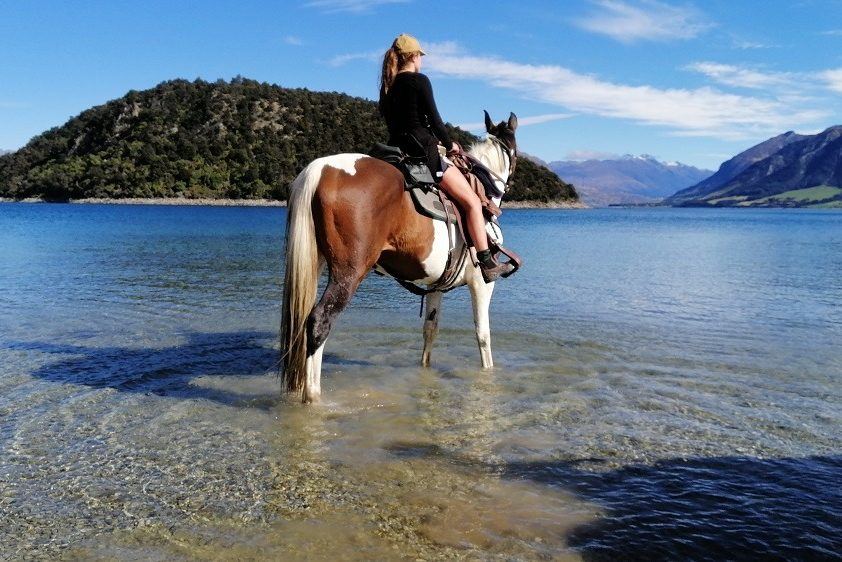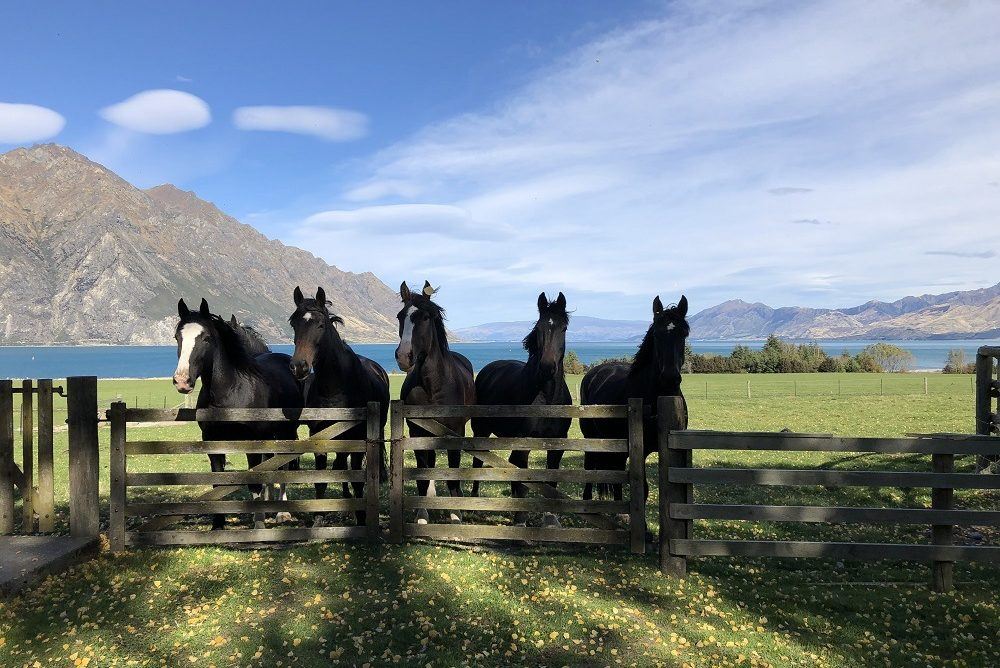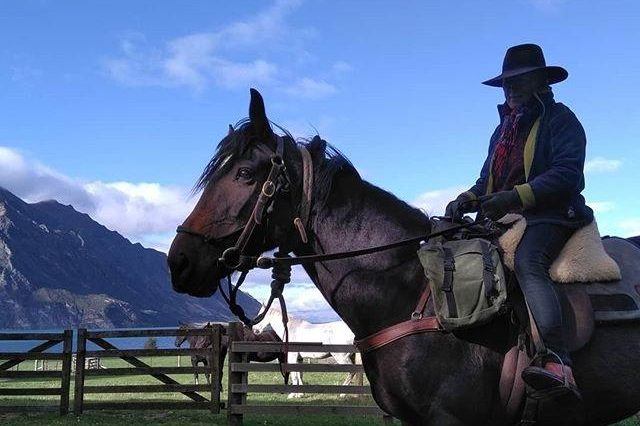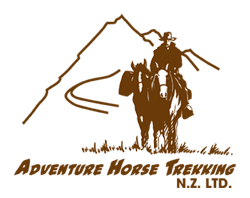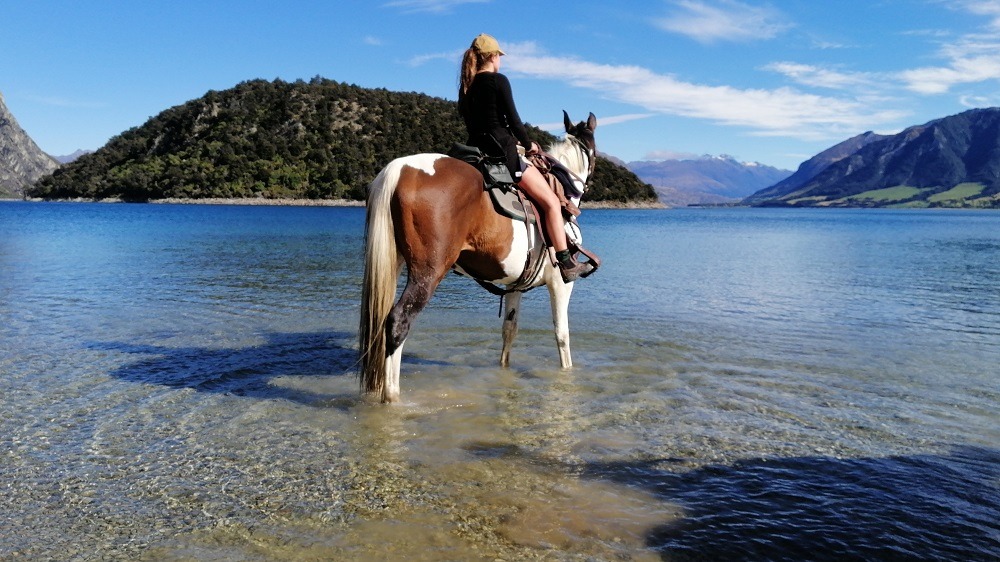
Magical Memories Made Diary Log
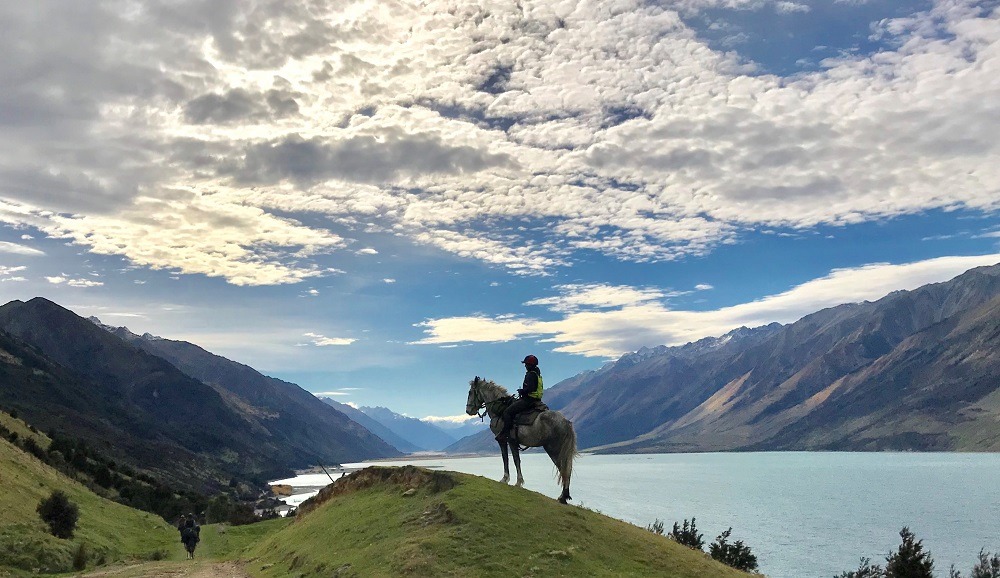
Lake Hawea Hunter River Ride
Do you yearn to live in the moment?
Are you wishing that life was a little less crazy so that you could step back and just enjoy your time more?
On our adventures we are in our own horse bubble of time. Here at Adventure Horse Trekking NZ we so lucky to have secured exclusive access to the iconic stations that we ride on our trails.
We take time to step into the real 100% pure NZ and enjoy seclusion and silence with the mountains, rivers and lakes. Choosing these trails that tell the stories of our incredible Aotearoa NZ history, Maori and Pakeha(European.)
Photo Credit- Steph Reynolds
Maori History of this amazing location
Lake Hawea was named after a local Maori tribe who preceded the Waitaha people in the area. Maori History
Tribes came to this location in search of the precious pounamu (greenstone) and hunting for eels, birds especially Moa that lived in the Cromwell basin. Returning home on reed boats via the mighty Clutha river.
Our own local tribal Chief Te Huruhuru of Te Waimatemate drew the first maps of this area for Dr Edward Shortland assisting the European settlers to navigate the South Island.
When you see how far Te Huruhuru travelled gathering Kia “food” with no motorized vehicles, you recognize their accomplishments. Maori hunting parties utilizing the waterways and natural resources that Papatuanuku (Mother Earth) gave them. Evidence of cave drawings in the Waimate and Waitaki districts show drawings of animals they hunted.
Diary log: Lake Hawea Hunter River Ride Date: 21st March 2019
It has been 28 degrees today, the sky was a deep blue.
Lake Hawea was so very still, reflecting the magnificent mountain ranges like a magical mirror. Gifting the riders with 360 deg. awe-inspiring views. It has been like riding in a postcard every day on this trail.
March and April are the most incredible times to visit Central Otago, as the autumn colors paint the landscape reds, crimsons, gold and yellow.
Our accommodation for this evening is The Dingleburn Station which is located on the side of Lake Hawea.
As I write my blog to you it is 9pm and the full moon is rising high over the mountains brushing everything a beautiful luminescence. With no light pollution, the stars are so bright in the nights sky it is as though they wrap around her like a cloak.
The station is nestled in the heart of the mountains. As we rode through the station they were mustering 2000 sheep ready to be shorn. It was great to see the shepherds working their dogs, whistling and calling to them. Moving the huge surging mobs of sheep this way and that, through rivers and eventually, into their new paddocks close to the shearing sheds.
This evening as we ate our dinner, the owner Nikki Mead was mustering the sheep into the yards on horseback with her dogs. They are still working in the woolshed preparing for the shearers to come crutching the sheep in the morning. High country people work hard, with long days, but they are always welcoming, allowing us to peep into the window of their world. Sharing the stories and history of these wonderful stations.
This station is powered by hydro electricity from a waterfall 1/2 a km from the homestead. Backed up by a generator, power is never taken for granted here. There are no electric toasters or kettles as the drain on supply is too great. It takes planning and a great deal of Kiwi number eight wire to survive in these locations.
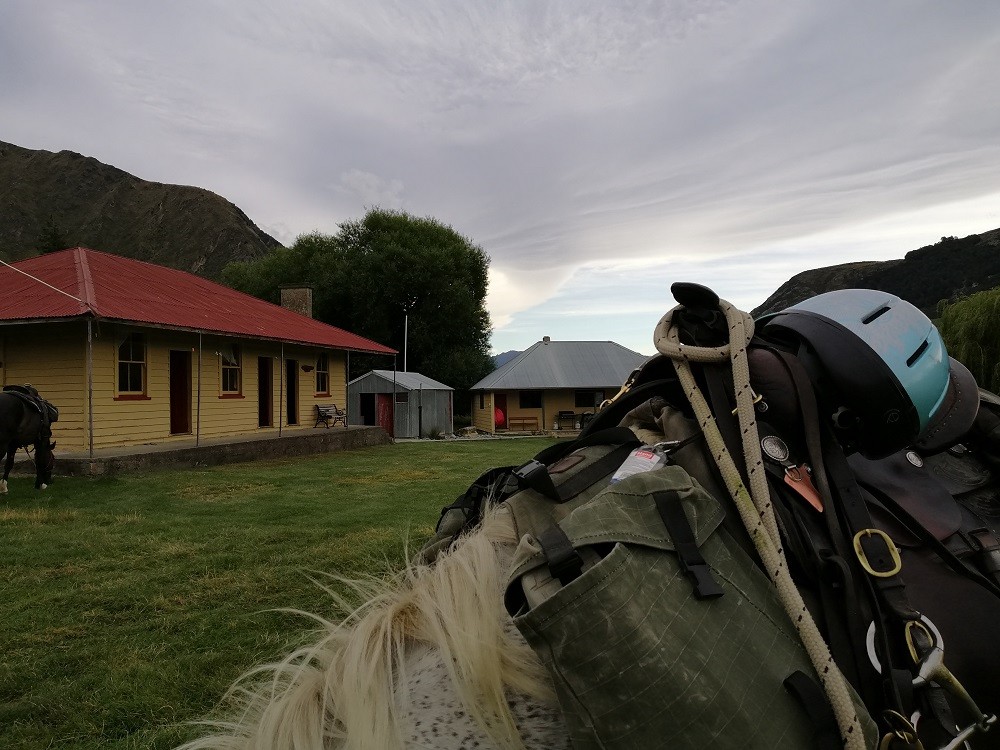
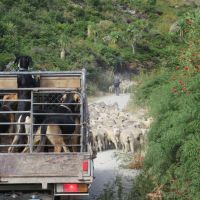

Date: 22ndMarch 2019, 6:30am: The station burst into life
we were woken to the sounds of the shearers arriving, dogs barking and shepherds shouting. As we breakfasted in the station cook shop, we could hear the buzzing of shearing equipment and the booming of soul music emanating from the woolshed.
As the sun rose, it struck the tin on the woolshed warming away the last of Jack Frosts fingers and the sheep waited patiently in the yards to be crutched. The odd bossy “Huntaway” gave a few barks as he heard a familiar whistle.
Riding into breathtaking beauty
The riders packed up their tucker boxes and rode out of Dingleburn Station. As I watch them ride away under cerulean sky, I packed up the 4-wheel drive and left the began following along behind the shepherds mustering the lambs out through the bluff.
The shepherds advised me it will be an hour and a half’s wait behind them, but I am enthralled, enjoying being immersed in their lives even for this short time. The Huntaway’s on the back of their truck are standing up on their hind legs to see over the cab in case a sheep needs a quick bark to keep it on track. One naughty heading dog thinks she knows better than the boss and continually jumps off the back of the truck, causing Paddy the shepherd to hop out and put her back in the cage. Time and again they engage in this dance. Paddy’s Uncle is over from Australia and you can see he is loving the whole affair.
The French shepherdess is with her dogs following the flock. The noise and dust are hanging in the air and the lake, so still, acts as a mirror for the whole scene.

Kiwi Number 8 Wire
The bluff is an incredible piece of Kiwi engineering.
When the NZ Government raised the height of Lake Hawea by 20 meters to store more water in 1958. They cut off the only access route to the Dingleburn station, then Timaru Creek Station.
Mrs Sarginson tells the story of the incredible construction of the bluff by her late Husband and Brother in Law in her interview with the Otago Daily Times.
He maurea kai whiria! Ignore small matters and direct effort toward important projects
Maori Proverb thanks Massey university
Incredible History, Station life, how did they do it?
As slowly make progress through the bluff behind the sheep I can’t help wondering about those who have lived in these magnificent places 100 years ago.
How did they manage in such isolation?
The South Island high country can be an unforgiving environment with extremes of weather from Summer through to Winter. These people’s livelihood is and was totally dependent on Papatūānuku(Mother Nature).
- How did the wahina (Women) manage even the simplest tasks with no electricity or running water?
- How did the tamariki (children) get to school?
Last night I looked at our horses busily munching the grass in their evenings paddock and realized, this land was forged utilizing horses. The farmers needed an animal that was able to multi task,
- pull a plough
- muster the sheep
- pop into the gig to go to town or church on Sunday
- for the children to ride to school and
- even in the hunt field
This is how the New Zealand “station bred” horse came to be families relied on them. Horses have given so much to this land making life bearable in otherwise untenable situations.
Thank you
The footsteps of the past be they Man/ Woman, bullock wagon or horses should always be honored.
He maurea kai whiria! Ignore small matters and direct effort toward important projects
Maori Proverb thanks Massey university
